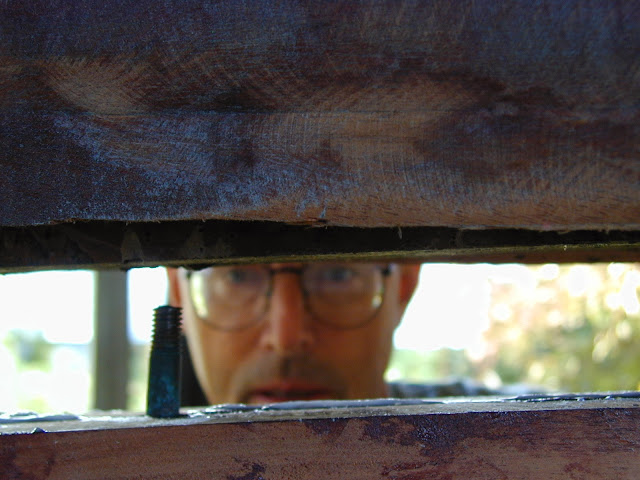In 1975 Barbara and Stormy Mayo began building a 37-foot wooden schooner from stem-to-stern. Neither were boat-builders. Istar will be launched in Spring 2014, nearly 40 years later.
The first major step was pouring the keel.
This article published on Thursday June 10th, 1976 reads,
"As three-and-a-half tone of molten lead gushed out of two bathtubs into a long wooden mold sunk in the ground. Stormy and Barbara Mayo's 37-foot topmast schooner began to take shape Friday for the first time off the drawing boards.
It took all morning to melt the 7000 pounds of scrap lead destined to ride under the waves as the boat's heel. A cinder block furnace surrounded the two cast iron bathtubs, which sat as iron beams atop other bricks. The wood fire beneath was stoked from 9 a.m. till 1:30 p.m. before all the lead pipes and sheets and old contorted fittings of many shapes and sizes--melted and sank under the dross that floated on the surface.
The blaze turned Bradford Street drivers into a parade of rubberneckers. That amount of lead is a lot for an amateur to cast, and Stormy prepared for the task off and on for three years. He read up on it, called foundress and experts, carefully calculated volumes and weight, angles and heat, and when it went off smoothly he was visibly relieved.
Helping with the job, which began to look like smokey preparations for the defense of a medieval fortress, were his father Carlie and Curtis Dionne and Larry Thomas, mates on Charlie's charter sports fishing boat.
Everything that wasn't lead floated to the surface in the tubs, including hundreds of clamps that came off car wheel weights which were melted down. When the dross was skimmed off with shovel and hoe, the liquid lead's silvery surface glistened like mercury.
One hitch that caused a few anxious moments was a clogged drain in one of the tubs. But Dionne managed to poke through the solidified lead with an iron pipe, and the metal gushed into the 14-foot wooden trough, 15 inches deep, that molded the keel.
After two days of cooling, the keel was to be dug up, jacked up by means of chains already placed around the mold, moved a few yards back, and positioned so the hull can be built about it. Stormy estimated it will be another two years before his stocks of African mahogany are shipshape and seaworthy."



